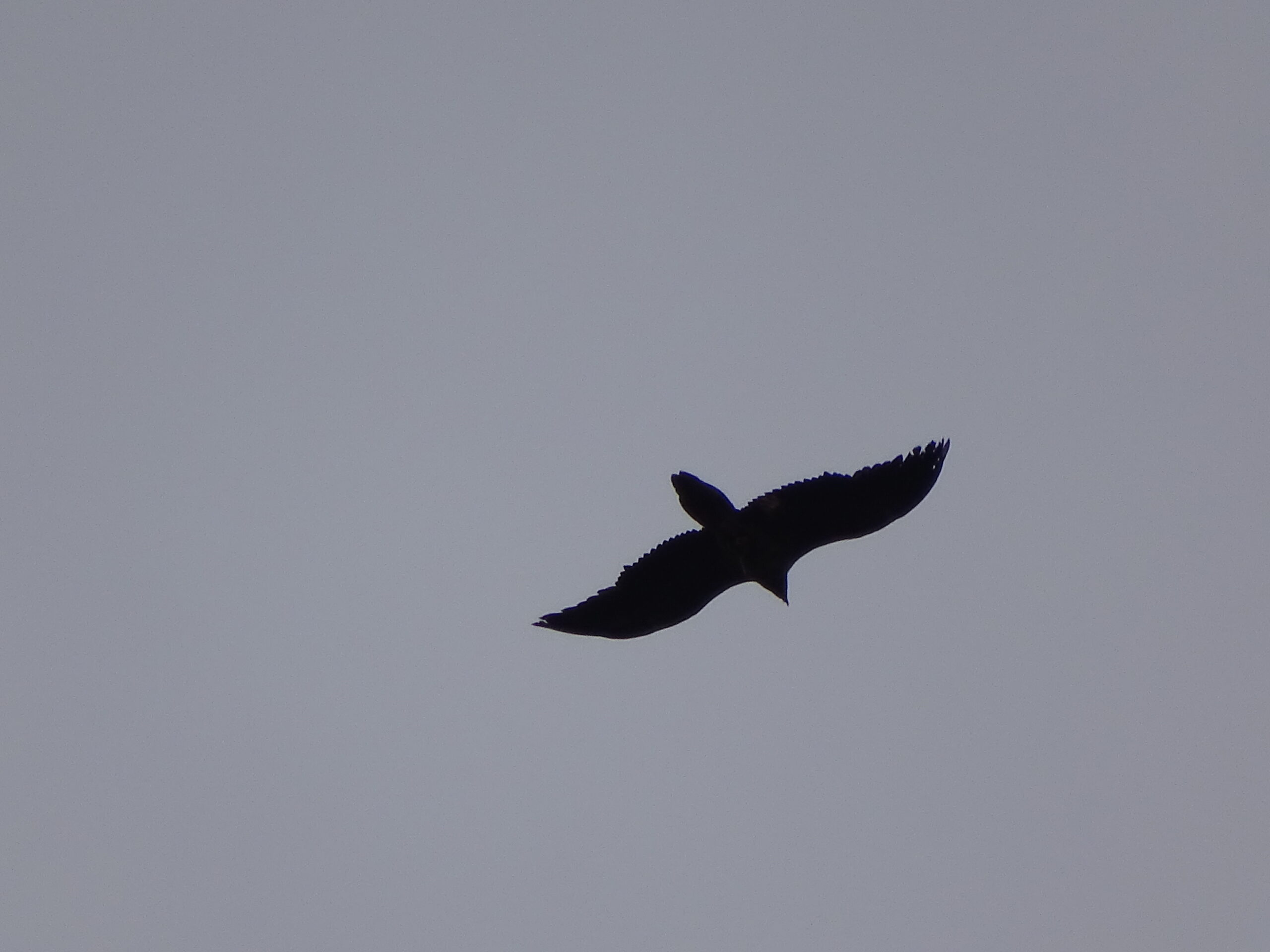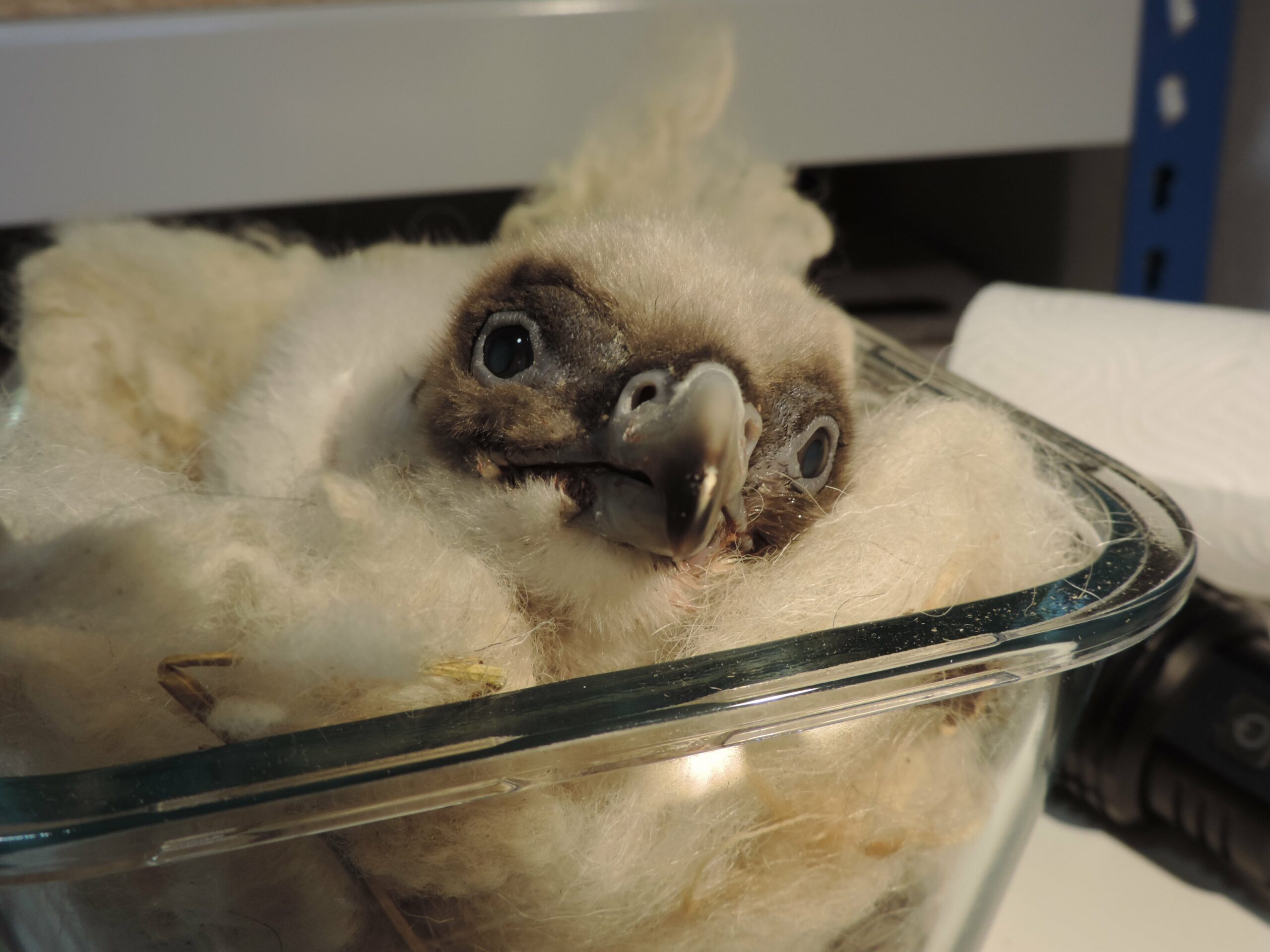
Bearded Vultures Gerlinde and Calandreto who were released in different areas and at different times, were recently observed again in the wild and identified with certainty! These identifications put the LIFE GypConnect team at ease after some time of not knowing how the vultures are doing since they were either not observed or could not be identifed.
Bearded Vulture Gerlinde
Gerlinde is a female Bearded Vulture that was released in the Vercors in 2013. She appeared in the Baronnies in autumn 2013 to spend the winter there. Since then, she was identified every year (mainly from October to May) thanks to her discoloured feathers and unique rings, used as techniques to monitor the species.
But since April 2018, the LIFE GypConnect team was not able to identify her with certainty due to the moulting of her discoloured feathers and the growth of the tarsal feathers, partly covering her rings. Since that date, an individual whose plumage and age class matched hers was seen regularly, but the team was not sure if it was her.
In mid-February 2020, it is now confirmed that Gerlinde still frequents in the Baronnies! It was during a ring reading session at the LIFE GypConnect’s main rendering area that Romain Barou managed to take a picture of the rings of this Bearded Vulture, allowing the team to identify Gerlinde with certainty. This photo helped the team to affirm that Gerlinde frequents both Vercors and Baronnies, thanks to some small plumage details.
Bearded Vulture Calandreto

Bearded Vulture Calandreto was released in the Grands Causses in 2017, then crossed the Pyrenees on the Spanish side at the end of May, and later on, returned to the Grands Causses in late 2018. But since May 2019, the LIFE GypConnect team was worried because the data transmitted by the GPS tag indicated that the bird was not moving.
The Vulture Conservation Foundation (VCF) and the Spanish guards in Aragon contacted each other to conduct research, and after a few days, the guards discovered the transmitter with no signs of the bird. So, the LIFE GypConnect team hoped that the birds were fine and that it lost its transmitter, which was confirmed in June as he was observed!
On 23 February, it was likely that Calandreto resurfaced. The team saw two immatures flying together above the Jonte gorges – one with a transmitter, the other without. Arcana was the first one, although its GPS transmitter is no longer giving off a signal. Calandreto could, therefore, be the second bird as he lost his transmitter in the summer of 2019.
The teams and volunteers of the LPO Grands Causses and the Cévennes National Park then expanded their observations. They finally confirmed the presence of Calandreto in the Jonte gorges on Friday 28 February 2020 – he returned to his roots! Although the three-year-old male (in his 4th calendar year) no longer has a GPS tag and his wing markings are no longer very visible, his rings still allowed for him to be identified.
Calandreto soon started interacting with his fellow Bearded Vultures, sometimes observed in flight with Arcana, sometimes perched next to Lausa.
Bearded Vultures in the Grands Causses

The gradually growing number of Bearded Vultures in the Grands Causses increases the attractiveness of the territory. Layrou and Adonis seem to have settled permanently on the cliffs of Lozérien. Arcana has never left the Grands Causses since its arrival on the Aveyron side. Calandreto’s repeated returns to the Massif Central despite his visits to the Pyrenees give hope that he will settle in the area…but only time will tell.
The team also closely monitors Lausa and Cévennes that were released in 2019 in the Grands Causses and are discovering the surrounding areas. Even though they travel long distances (Cantal, Hérault), they always return to occupy the cliffs of the Jonte and Tarn Gorges.
LIFE GypConnect

Led by the League pour la Protection des Oiseaux (LPO), the LIFE GYPCONNECT project aims to establish a breeding population of Bearded Vultures in the Massif Central and Department of the Drôme. Releasing captive-bred Bearded Vultures into the wild at sites such as the Parc Naturel Régional des Grands Causses, Parc Naturel Régional des Baronnies Provençales and Parc Naturel Régional du Vercors will create a core population that will connect the two populations of the species in the Alps and Pyrenees. To facilitate movements between the new population and the Alpine and Pyrenean populations the LIFE GYPCONNECT team is creating a network of supplementary feeding stations, and tackling threats such as poisoning, and collision and electrocution with the electricity infrastructure.






